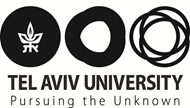Department Seminar Of Tomer Berghaus- Optomechanical Interaction of Dipolar Nano-Structures
Optomechanical Interaction of Dipolar Nano-Structures
Monday May 19th 2025 at 14:00
Wolfson Building of Mechanical Engineering, Room 206
Abstract:
The present study relates to optomechanical dynamics, radiation scattering, and bifurcation phenomena in both chiral and achiral nanostructures, with a particular focus on their unique optical properties at the nanoscale. A central motivation for this research is the key role of polarizability in modeling the interaction between nanostructures and electromagnetic radiation. Polarizability serves as a fundamental parameter that encapsulates the tendency of matter, to acquire an electric dipole moment when subjected to an external electromagnetic field, and critically, it enables a simplified yet accurate description of the resulting optomechanical dynamics of a free solid object immersed in a viscous fluid, including the calculation of optical torques and forces.
Accurate determination of the polarizability of nanostructures, is especially important when addressing the influence of edge configurations and boundary effects—factors that can significantly modify the nanostructure’s local field response and, consequently, its optical and mechanical behavior. This aspect forms a central core of our investigation: examining how edge-induced variations in polarizability affect the optomechanical response of a nanostructure such as optically trapped Nano-spheroids, carbon nanotubes (CNTs), graphene ribbons, and nanoantennas. Light-matter interactions involve complex phenomena such as enhanced absorption, scattering, and optomechanical nonlinear dynamics. Geometry, material properties, and boundary configurations all contribute to shaping the system’s polarizability and hence its optical behavior and dynamical response.
A significant part of this research is devoted to bifurcation analysis, which examines how variations in external parameters—such as radiation intensity or frequency—lead to transitions between different dynamical states. A stability analysis shows multiple equilibria and Hopf bifurcations; above threshold the system enters quasiperiodic and fully chaotic rotational dynamics. With active-fluid forcing, similarly complex chaotic trajectories can be sustained.
The study underscores the pivotal role of polarizability—not only as a descriptor of the nanostructure’s optical response, but also as a bridge linking geometry, material properties, and dynamic behavior of an object in a solvent under electromagnetic excitation. By elucidating how edge effects and boundary conditions shape the optomechanical landscape, the present research lays the groundwork for a precise control of the nanoscale motion, enabling future applications in optical manipulation, sensing, and in the optimal design of responsive Nano-devices.
Bio:
Tomer Berghaus is a PhD candidate at the school of Mechanical Engineering - Tel Aviv University, currently working on optical scattering, nonlinear dynamics and bifurcations of Nano-structures. His research, to-date, on optical forces and light scattering in Carbon nanotubes, the theory of edge effects and conductance in Graphene-based Nano-antennas and nonlinear Dynamics of Optically Excited Chiral Nano-Spheroid, have been published in IEEE-COMCAS (2021), Applied Sciences (2023) and IEEE-COMCAS (2024) respectively. Tomer received his BSc and MSc in Mechanical Engineering both from Tel Aviv University and is an active physics lecturer in colleges and high schools.


